
All photos in this post by the talented Natasha Garoosi
The day that I realized everything in my closet was made of plastic was the day that I decided to change my life.
Before going Zero Waste, my closet was full of fast fashion which is predominately made of oil/petroleum based fabrics like polyester which is now what makes up the predominance of the fast fashion industry (by 2025 it is estimated that annual production numbers of polyester will be close to 100 million tons).
Why is this plastic/polyester clothing bad?
First, it’s made from oil (think oil spills, think toxic chemicals for extraction) but even more close to home, it’s highly flammable and often treated with flame retardant which is toxic. Plastic products are also known to be carcinogenic, so I definitely don’t want them anywhere near my body.
Why do I buy secondhand and not new?
The clothing industry utilizes child labor, dangerous working conditions, planned obsolescence, and TONS OF WASTE (think 25 billion pounds of clothing waste in the US alone every year).
As opposed to creating a demand for more clothing production, I opt to utilize items that are already in the waste stream.
When I say that everything in my closet is more than six years old or secondhand, I mean it. But when people look at my outfits and my clothing, they often ask “but how do you find those things while secondhand shopping?” (those meaning items that don’t look quintessentially secondhand or off trend)… I’ll get into this in my next post…
… But for this one I’m about to let you in on the secrets to my zero waste wardrobe by showing you how I edit my current wardrobe to contain exactly what I need and love. Here is my guide to making the most of your wardrobe by assessing, editing, and selling parts of your current closet.
Step 1: Invite an honest friend over to help you.
I roll with a tell it like it is crowd, so when I want tough critics when it comes to my wardrobe, I recruit them. They are always honest with me about how something fits, whether or not I should keep an item, if something is timeless or not, and if my basics look well kept. They also do things like take a photo of me in the clothes from different angles that I can’t necessarily see in the mirror when deciding, so I have a better idea of not just how I feel in them, but how I look from all angles. It really helps me make my final decision.
Step 2: Assess what you don’t want, don’t wear or truly don’t need.
 When looking at a piece of clothing that you’re trying to figure if you want to keep or not, here are some questions to ask yourself to figure out if it’s worth keeping:
When looking at a piece of clothing that you’re trying to figure if you want to keep or not, here are some questions to ask yourself to figure out if it’s worth keeping:
When’s the last time I wore this?
If you can’t remember, or if it was over a year ago, chances are it won’t get much wear in the future.
Do I have something in my closet super similar that I wear more often?
As creatures of habit, we tend to buy a lot of items that are like each other. If you have two very similar items in your closet, you’re most likely always going to wear one of them over the other probably because it fits or feels better. Get rid of the second place item so your wardrobe is only filled with winners.
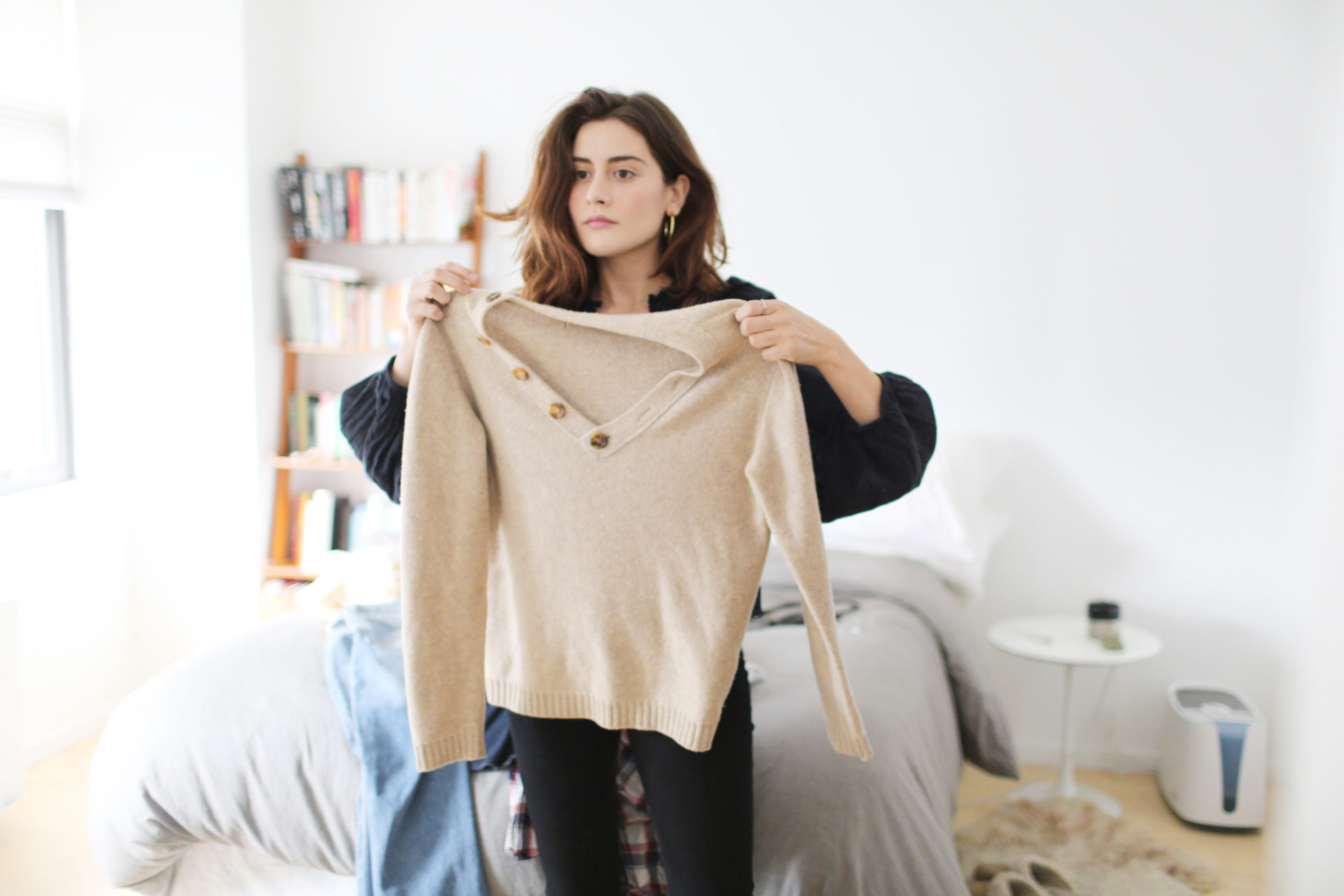
Am I holding onto this because I want to be the kind of person who would wear this?
Sometimes we buy items we want to be “brave enough” to wear or because we want to shift our personal styles. I’m all for stepping outside of your comfort zone when it comes to what you wear, but sometimes we can be a little too ambitious and splurge on something we just never find a reason to wear.
Does it fit correctly?
You might have some things in your closet that you aren’t wearing because they don’t actually fit. If it’s something worth getting altered at a tailor, make a separate pile of items to take to the tailor (and actually do it!).
Is this easy to wash?
Because I can’t be the only one with a silk piece that I don’t wear because I don’t want to deal with washing it after.
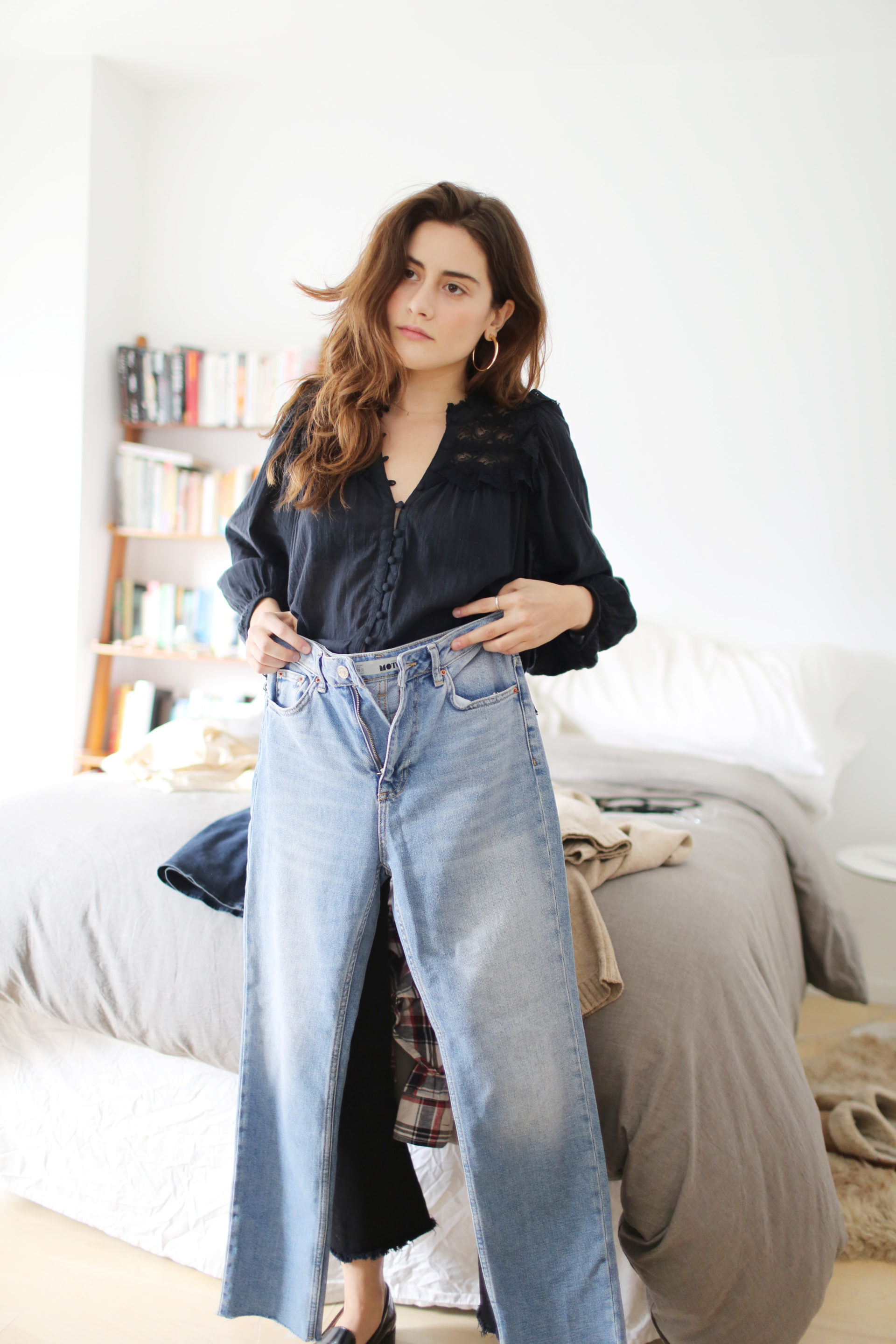
Can I wear this with more than five outfits?
I always opt to keep pieces that fit with the rest of my wardrobe. If I have an obvious outlier (yes, I’ve made an impulsive secondhand trend purchase before) and nowhere to wear it, it’s ripe for the selling.
Can I wear this three days in a row without someone knowing?
Most of my clothing is a solid color, has a day to night vibe, and can be worn over and over again with other pieces in my closet multiple days in a row.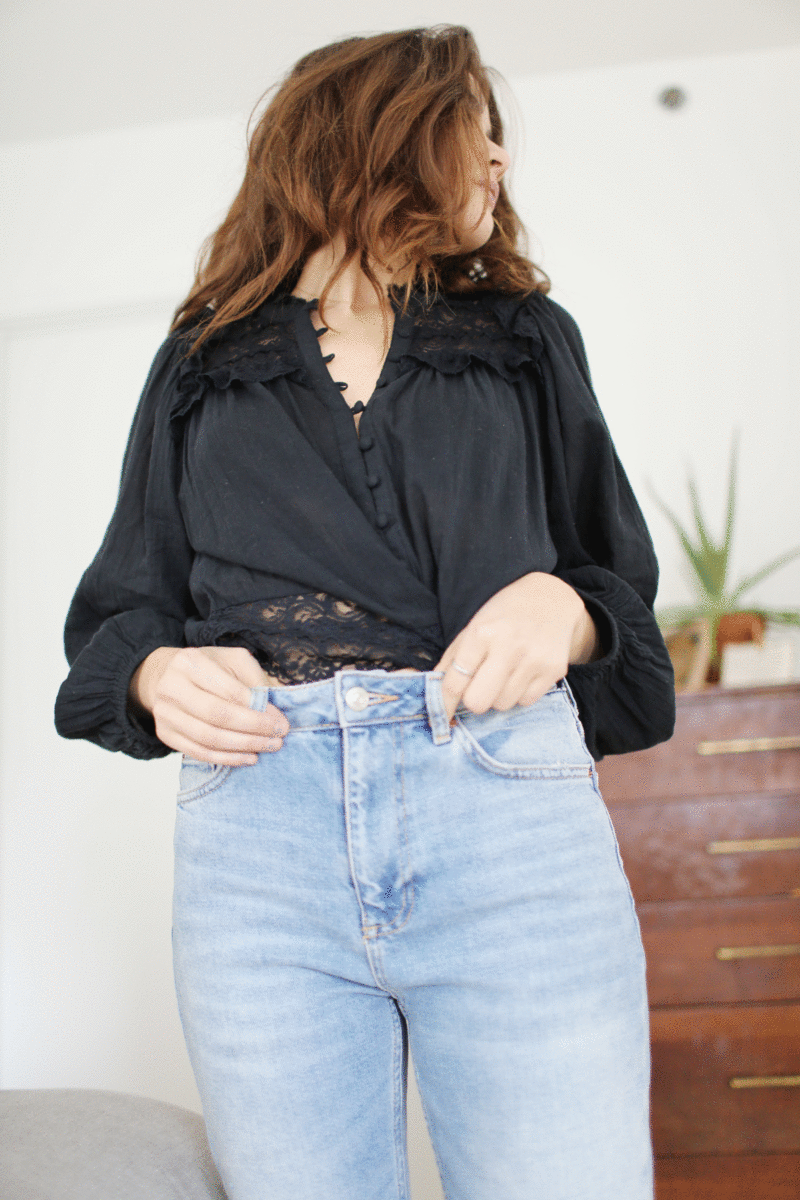
Will someone else love this item more than me?
I find it hard sometimes to let go of clothing items because they hold sentimental value to me – a dress I wore on my birthday or a sweater I bought with a friend. But one of the best ways I’ve found to finally let go of items is thinking about the person out there who might find a piece of my clothing and love it forever. Have you ever found something while thrifting and wondered how you got so lucky to find the perfect thing that fits you like it was made for you specifically? Someone had to give up that item in order for you to find it (or it to find you, really), so take comfort in knowing you could be doing that for someone else!

Step 3: Make a list of items you could use in your wardrobe.

Mindless and unnecessary purchases can often happen when you go out shopping with no real plan or idea of what you already have in your wardrobe, which is why making a shopping list is crucial.
After clearing out your closet of items you’re going to donate or sell, it’s time to figure out the items you could add. Here are a few helpful questions to ask to get you started.
Where is my wardrobe unbalanced?
Have you found yourself wishing you had pieces over and over? Do you have a great collection of denim, but not many tops to wear with them? Add “tops that could be worn with jeans” to your list.
Do I have items I want to wear, but nothing to wear with them?
Whether it’s the perfect turtleneck to pair with your overalls, or a shirt that is begging for high wasted jeans, what outfits are just waiting for their missing piece?
What have I been coveting from my friends / style icons?
Have you saved tons of images on Instagram of pink coats? Are you jealous of your best friend’s new pair of suede boots? Draw inspiration from people’s looks you want to try!
Step 4: Make a list of what you don’t need any more of.
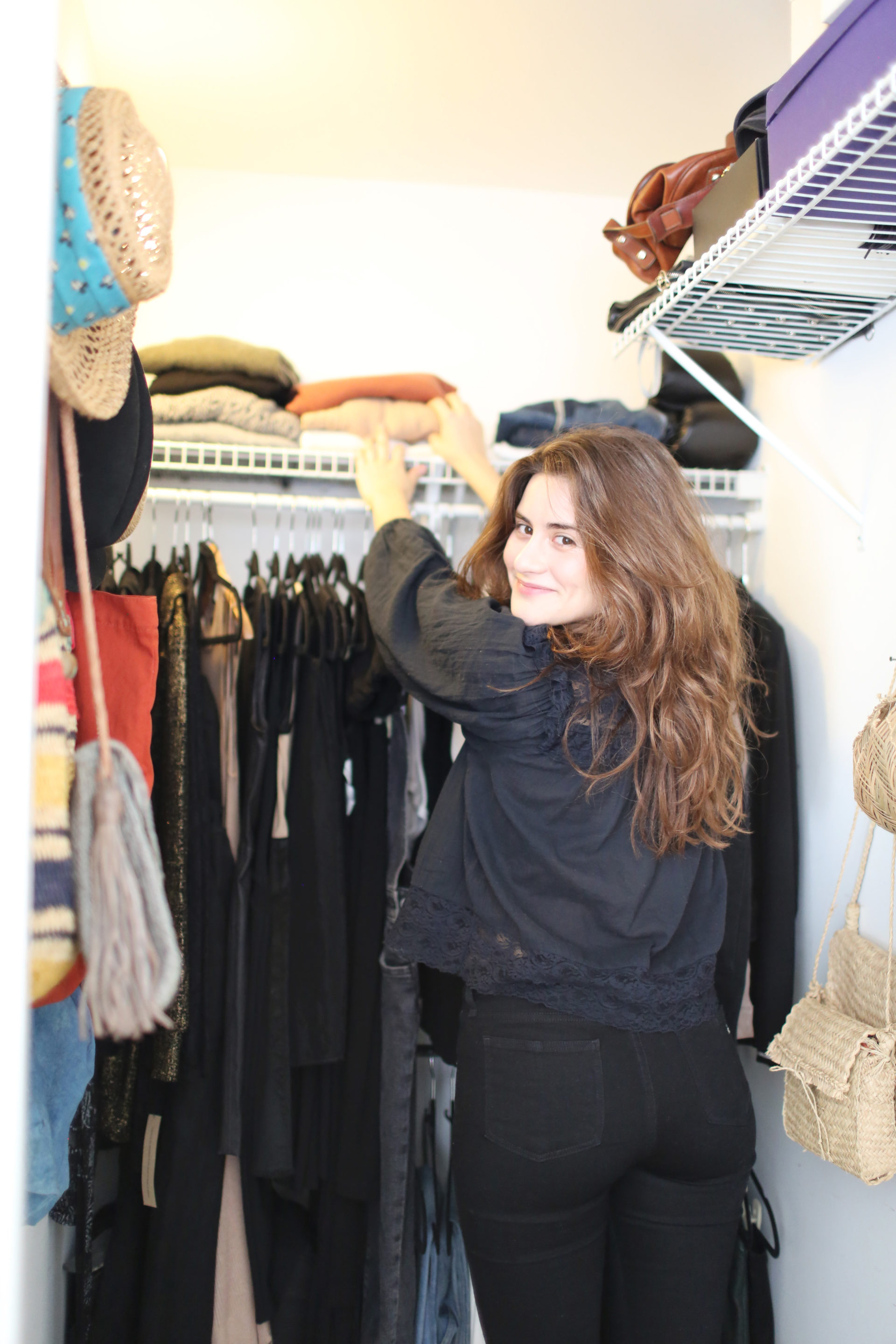
On the flipside of making a list of items to a look out for, be aware of what you have a tendency to buy a lot of and write those items down. That way you won’t get trapped into mindlessly buying something you don’t need any more of – even if it is super cute on you.
Step 5: Keep it zero waste!
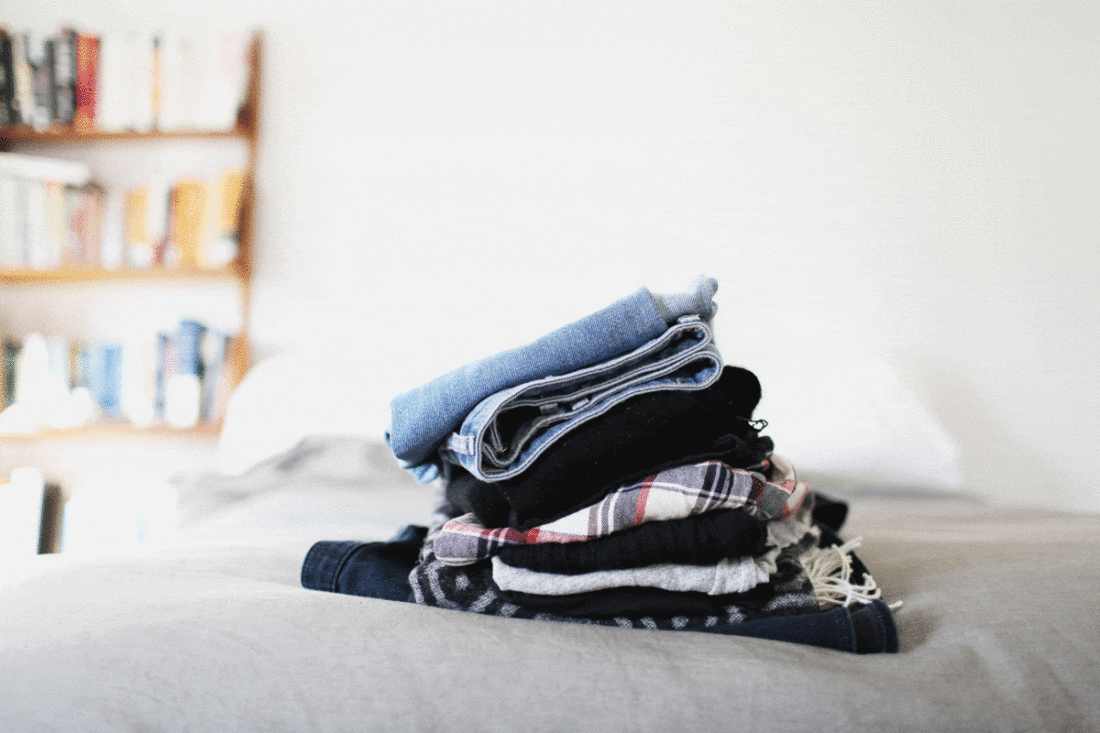
Now that you’ve found out what you don’t need, here are the easiest ways to keep the rest of the process zero waste.
- Give away, sell or donate all of your items.
- Sell or donate items to somewhere local so you don’t have to deal with shipping and unnecessary packaging.
- When taking items to sell or donate, bring them in reusable bags, and bring some extras with you if you plan to do some secondhand shopping too.
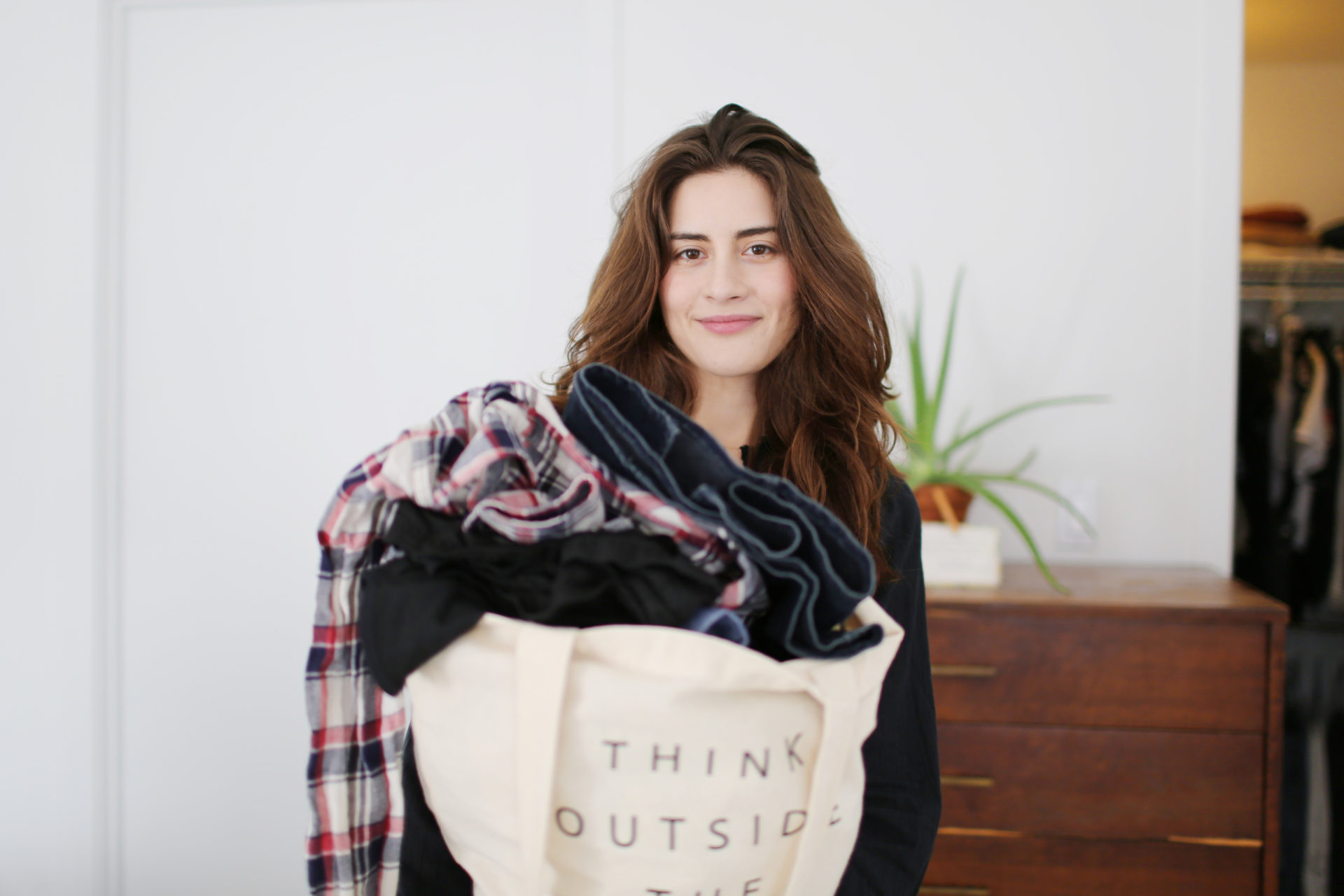
If you don’t have secondhand shops near you, some awesome online options are Poshmark and Ebay but be sure to ask your seller to ship in paper envelopes without plastic (USPS has 100% post consumer envelopes!)
The average american tosses 82 pounds of textiles each year and by selling or donating my clothing, I help the environment by not sending textiles to landfill. Plus shopping secondhand saves me money by not buying expensive new pieces, and I stay healthier by avoiding toxins used in the textile manufacturing industry.
Next up, some secondhand shopping outfit inspiration. Stay tuned!
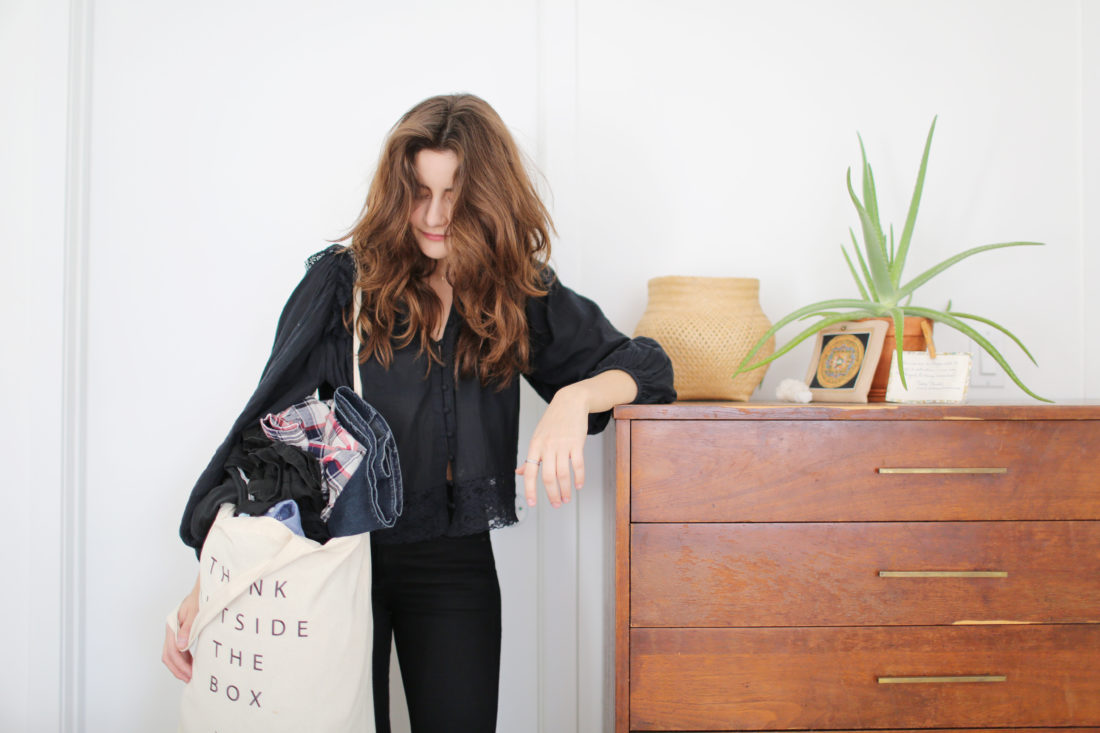
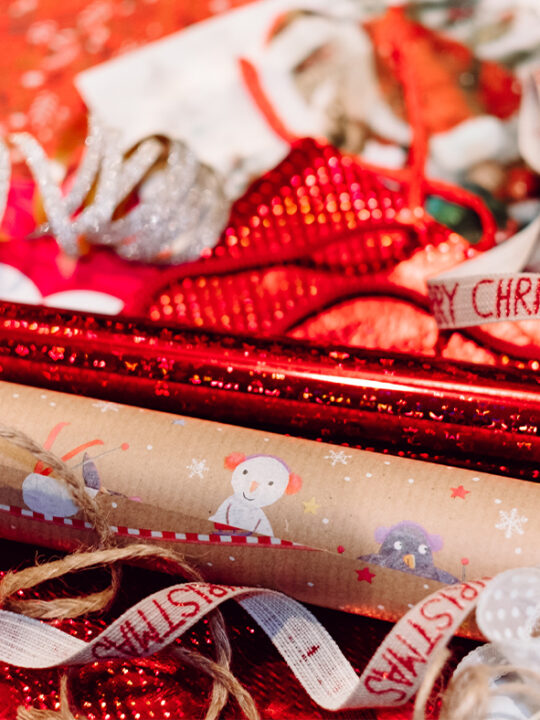

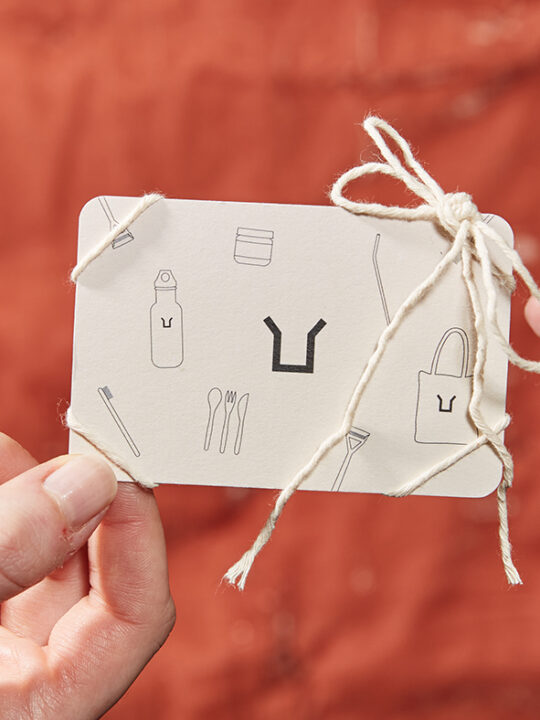
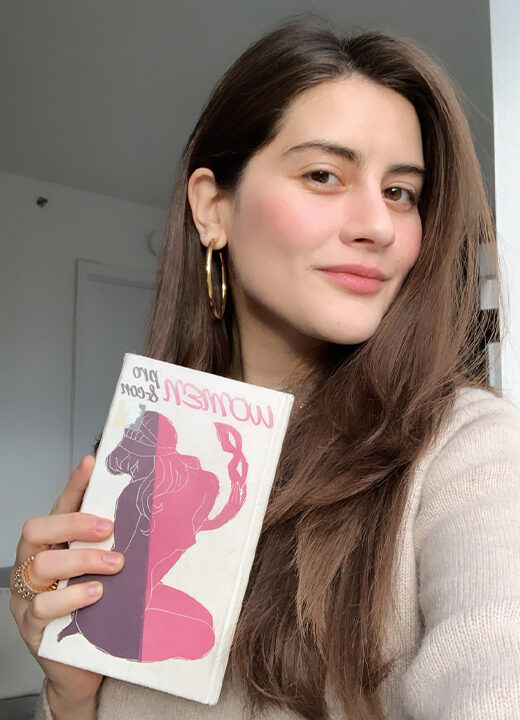
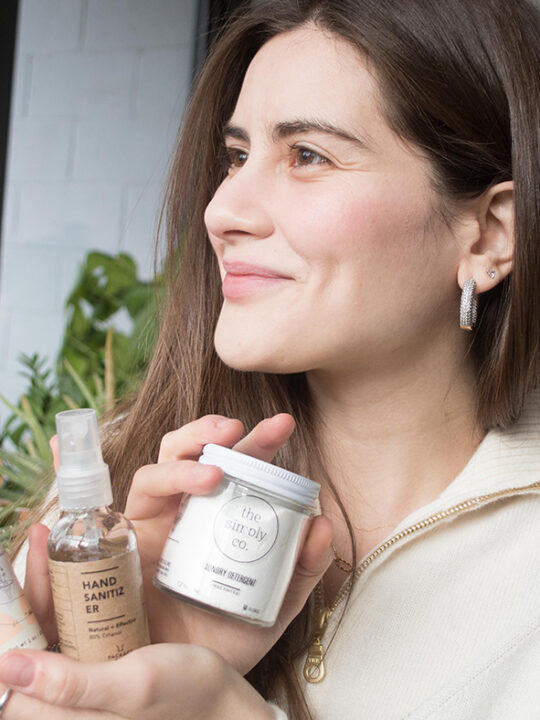
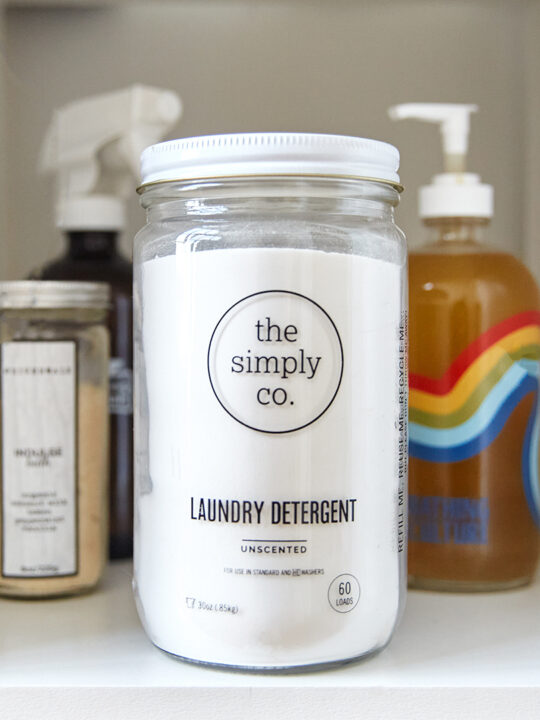


32 comments
Hey Lauren! I love your posts and honestly I’m taking itty bitty steps to trash free myself. I just wanted to know what fabrics to look for when second hand shopping. Like the dos and dont in a way. Especially for winter.
Thanks for your comments! I go for anything that is easy to clean first, like cotton. But as far as fabrics, anything that is 100% cotton (avoid blends with synthetics), cotton denim, wool, cashmere, linen, silk are my go-to’s.
Loved your guide! I recently realized how deciding go zero waste has changed my style a little. It’s more minimalist and I loved it! In Brazil, thrifiting is starting to gain some space, but it still has a long way to became popular.
Thanks for your comment, at the bottom I recommend two online shopping sites that could help in the meantime 🙂
I am currently 2 months into a clothes buying ‘diet’ – I have bought exclusively second hand for years but because stuff is so cheap I had ended up with a load of it’s-only-£3-so-I-might-as-well ‘bargains’ that I never wore, and overstuffed drawers and a wardrobe I could barely find anything in because it was so full. After a purge of about 20% of a lot of stuff that I had never worn, or which I knew didn’t suit me, or didn’t go with anything else, I am now making a conscious effort to wear more of what remains and find new outfit combinations, as well as tackle my sewing pile – more of a sewing Mt. Everest really.
At the end of the 6 months I’ll do another purge of anything still not worn (winter clothes, anyway, it’s not a fair test of summer clothes as I started at the end of August). I have drawn up a small shortlist of things to look out for that I think I could do with, and am determined to only buy those when I allow myself to buy anything else. I cannot lie, I am sorely missing charity shopping though!
Awesome, it probably feels so good to do these purges!! I know it can be tempting when secondhand clothing is so much cheaper, the list really helps me.
Thanks for your comment! <3
“Get rid of the second place item so your wardrobe is only filled with winners.” Such good advice and a concept I need to be better about practicing!
Yes, I practice that trick regularly! Such a good one!
Hey ! Love your post! But for me, living in Europe(switzerland) it’s freaking hard to get some good secondhand & cheap clothing.. do you know some website who ship clothing to Europe ?
Love !
Yes, I believe the two mentioned in the article ship internationally.
I loved reading this post! I’ve recently begun shifting my clothing shopping to make it less wasteful. I’m curious how you avoid waste when online shopping or when shipping items from your store. I love the idea of the paper envelopes but what if something needs to be protected from water exposure? And how do you avoid using tape?
What do you do with clothes that are so worn out they can’t be resold?
I’m not affiliated with this blog, but I know some secondhand stores like Goodwill will take worn clothes for textile recycling. H&M stores do that too, and Madewell recycles old denim for housing insulation (and both give coupons for future purchases when you do so!).
Crafts people sometimes repurpose used clothing for fabric. If you have a great piece of clothing, but it’s tattered in places — there might be a designer, quilter, or artist that will use your fabric in a project.
I use this kind of material fairly often. For example, I am using denim from used jeans to make jackets and backpacks as gifts for people this year. I know other people who use not-quite-givable clothing in their projects, as well.
I’m not sure how to find someone interested. Maybe Freecycle or Craigslist?
Hi Lauren. Thanks for all your great ideas. I know you’re used to getting pretty personal questions about period supplies, etc. so figured I’d go ahead and ask this: what do you do about underwear? Can’t donate my worn out pairs, so it seems that the trash is the only way to go unfortunately. Also, are there any companies/brands you can recommend for cute but earth-friendly, sustainably produced undies? Thanks!
So funny, I was going to ask the same thing for what to do about worn out underwear! As for a sustainable underwear option, I know Boodywear is popular and made of mostly bamboo. There are also Etsy sellers that make underwear out of cashmere (pricey but super luxe) and cotton or recycled cotton. There are definitely options out there.
I had the same question!
Hi Lauren, Im just wondering. Do you use make up?
Hi! I was wondering if you have any recommendations for how or where to recycle or sustainably dispose of old clothing, especially with polyester? I am slowly going through my wardrobe and trying to pare down and edit, but some things are not in good enough shape to be donated or consigned.
Hey Lauren!
Just wondering if you have any advice for old clothes that are worn out and beyond repair (like old stained t shirts with lots of holes haha). I’ve repurposed a lot into rags to clean down surfaces, just wondering if you have any other ideas?
I love what you are doing, you’ve been such a source of inspiration over the past year about cutting down on uneccessary waste!
All my best,
Kelly
Hi Lauren, just wondering what you do with clothes that are too worn or stained to donate to thrift stores? I buy all secondhand too, but eventually some clothes do wear out beyond repair. I use what I can for rags and scrap fabric for sewing projects but some clothes just end up in the bin. Thanks for all your advice!
I was just reading the link you posted about plastics/polyester being carcinogenic. From reading through the comments on her post the author says the safety of polyester is questionable but the process to make polyester is definitely not safe for both the workers & the environment. It’s o ne more reason to use natural fibers and when buying new items to look for GOTS certified organic fabrics whenever possible. Thanks for that link—really interesting blog.
In addition to postmark and ebay, a site I love is Threadup.com. They specialize in selling quality second-hand women’s clothes, shoes, and jewelry. They also have some kids’ stuff. Also, you don’t even need to ask for them to ship in paper envelopes! They do already! And if they put a tag on your clothing, it’s usually held to the garment with twine and a safety pin–no little bits of plastic! It’s a great website for zero wasters!
Oops, it’s thredup not threadup.
Do you really purchase used inder garments? If so, could you point me in the right direction?
Thanks
Donating your old clothes does not keep them out of the landfill. And there is a growing group of sewists who are making reusable menstrual pads. That’s the plastic, tons of it, that no one wants to address. I thought this article was derivative, and light on real resolutions.
Hi Lauren,
I just discovered you on your youtube channel today and I am so inspired by your lifestyle! But I have a few questions…
1. What should you do with clothing that is not in wearable condition? Such as clothing that have rips/holes in them, have lost their elasticity, the dye has faded, they are stained, or they are sagging. Or even such things as underwear that aren’t exactly hygienic to donate.
2. How do you know what exactly can be recycled/reused? I just learnt take-out coffee cups aren’t recyclable as they have a thin plastic film in order to hold liquid, this is something I never knew before! I also just found out from your “four years of trash” video that the tags that are stitched onto clothing with the washing and care instructions aren’t recyclable/reusable either – where do you find out all of this particular information?
3. I still live with my family, and want to work on reducing my consumption of waste and heading toward a zero-waste lifestyle, however, my mum won’t stop buying a lot of things as it would make her life harder finding the alternatives, as well as having to change the way the house is run all to fit my needs. Do you have any tips for turning waste-free in a heavy consumer household?
4. I don’t know any shopping markets/grocers that allow people to buy in bulk, everything comes in packaging! Is there any alternative that may be better for the environment, even if it isn’t 100% waste free?
5. I am still in school, and that means there are a lot of stationary items, such as glue, pens, sharpeners etc. that aren’t zero-waste, but are necessary, what are your tips on staying zero-waste in a school/work environment?
King regards,
Josie
Hey, I’m from Argentina. Personally I start to buy secondhand when I was 15, it was very natural for me, just think that the price of the clothes are out of control. Unfortunately is very common the illegal work here, the first lady now in 2017 is accused to have illegal workers incluiding childrens (she has a brand called “Awada”), and the goverment is taking out labor rights. It’s a really difficult time
Hey Lauren!
I love your posts and what you stand for! What do you do with clothes that are damaged and past the point of fixing or donating? I have a collection of socks with holes that I don’t know how to get rid of without sending them to landfill.
Hi Lauren, thanks for for your informative blog. Just wondering if you can clarify how buying second-hand is better for your health? If the garment is mass produced, how does buying it second-hand make it safer for you?
Thank you
Hello Lauren Singer, you are an environmentalist worth learning, imitating and praising. By producing video shows you show us how to become the owner of rubbish in everyday life and make the most of what we usually discarded. We all know that rubbish is an unused good resource. If rubbish is to be turned into resource, so as to reduce the harm to the environment, we must find ways to collect and dispose the existing rubbish easily and reduce the rubbish through technological progress. I very much support you through the design and sale of some very environmentally friendly products to allow more people involved in the reduction of domestic waste in the operation. I hope exchange some ideas about environmental protection with you. so that through the development of environmental protection with friends who share common pursuit . One of our only wishes is to make the sky bluer, the water clearer, the air fresher, the clearer the land. Chinese proverb says many people gather firewood together. Into english proverb the more the merrier. Thanks for all you have done.
What do you do with clothing and shoes which are no longer in good enough condition to donate or sell? How do you recycle these items?